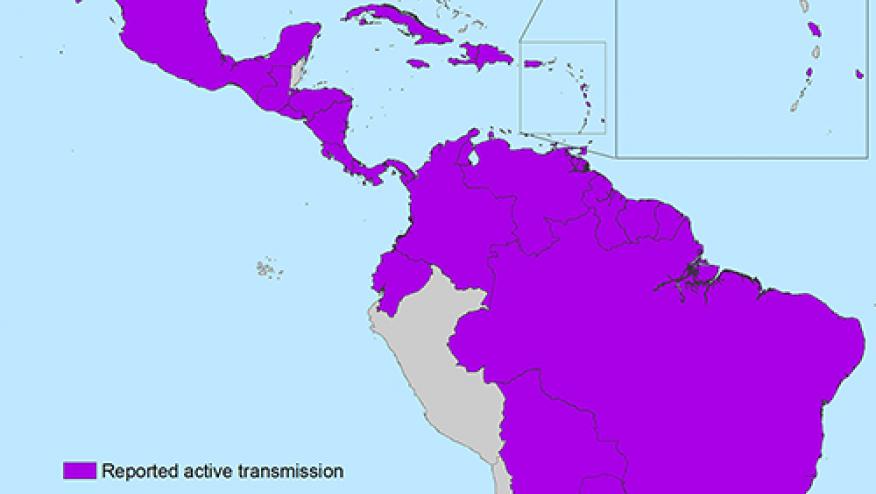MMWR Update on Zika Virus: 116 US Cases Related to Travel Save

The Centers for Disease Control and Prevention (CDC) reported that in the last year (January 2015 to February 2016), they have identified and confirmed 116 cases of the Zika virus among US residents, with nearly all having traveled to endemic regions. Although 110 cases involved traveled to a Zika-endemic area, 5 cases resulted from sexual contact with a person who had also recently traveled to such areas. The last case resulted when a mother passed the virus to her child in pregnancy.
"Among the 115 [U.S.] patients with travel-associated infection, all patients reported clinical illness," the CDC said. In the majority of cases, symptoms included rash (97 percent of cases), fever and joint pain. "Zika virus disease should be considered in patients with acute onset of fever, rash, arthralgia [joint pain], or conjunctivitis [pink eye] who traveled to areas with ongoing Zika virus transmission or who had unprotected sex with someone who traveled to one of those areas and developed compatible symptoms within 2 weeks of returning," Traveling patients who became ill reported symptomes 1 - 11 days after returning home from an endemic region.
For most the illness is generally mild and characterized by acute onset of fever, maculopapular rash, arthralgia, or nonpurulent conjunctivitis. Symptoms usually last from several days to a week. Severe disease requiring hospitalization is uncommon, and deaths are rare. A primary concern is infection while pregnant, as the Zika virus has been shown to cause microcephaly and other fetal complications. Earlier this week, scientists reported more evidence supporting a link between the Zika virus and microcephaly.
While this mosquito-borne virus is endemic in Central and South America and the Caribbean, Zika has been tied to thousands of cases (mainly in Brazil) microcephaly. Researchers report that one in every 100 pregnant women infected with the virus during the first trimester will give birth to a baby with the birth defect.
The CDC confirmed the Zika diagnosis by serum tests showing: 1) Zika virus RNA detected by reverse transcription-polymerase chain reaction (RT-PCR); 2) anti-Zika virus immunoglobulin M (IgM) antibodies detected by enzyme-linked immunosorbent assay (ELISA) with ≥4-fold higher neutralizing antibody titers against Zika virus compared with neutralizing antibody titers against dengue virus; or 3) anti-Zika virus IgM antibodies with 4-fold difference in neutralizing antibody titers between Zika and dengue viruses and a direct epidemiologic link to a person with laboratory evidence of recent Zika virus infection (i.e., vertical transmission from mother to baby or sexual contact). State and local health departments collected information on patient demographics, dates of travel, and clinical signs and symptoms.










If you are a health practitioner, you may Login/Register to comment.
Due to the nature of these comment forums, only health practitioners are allowed to comment at this time.